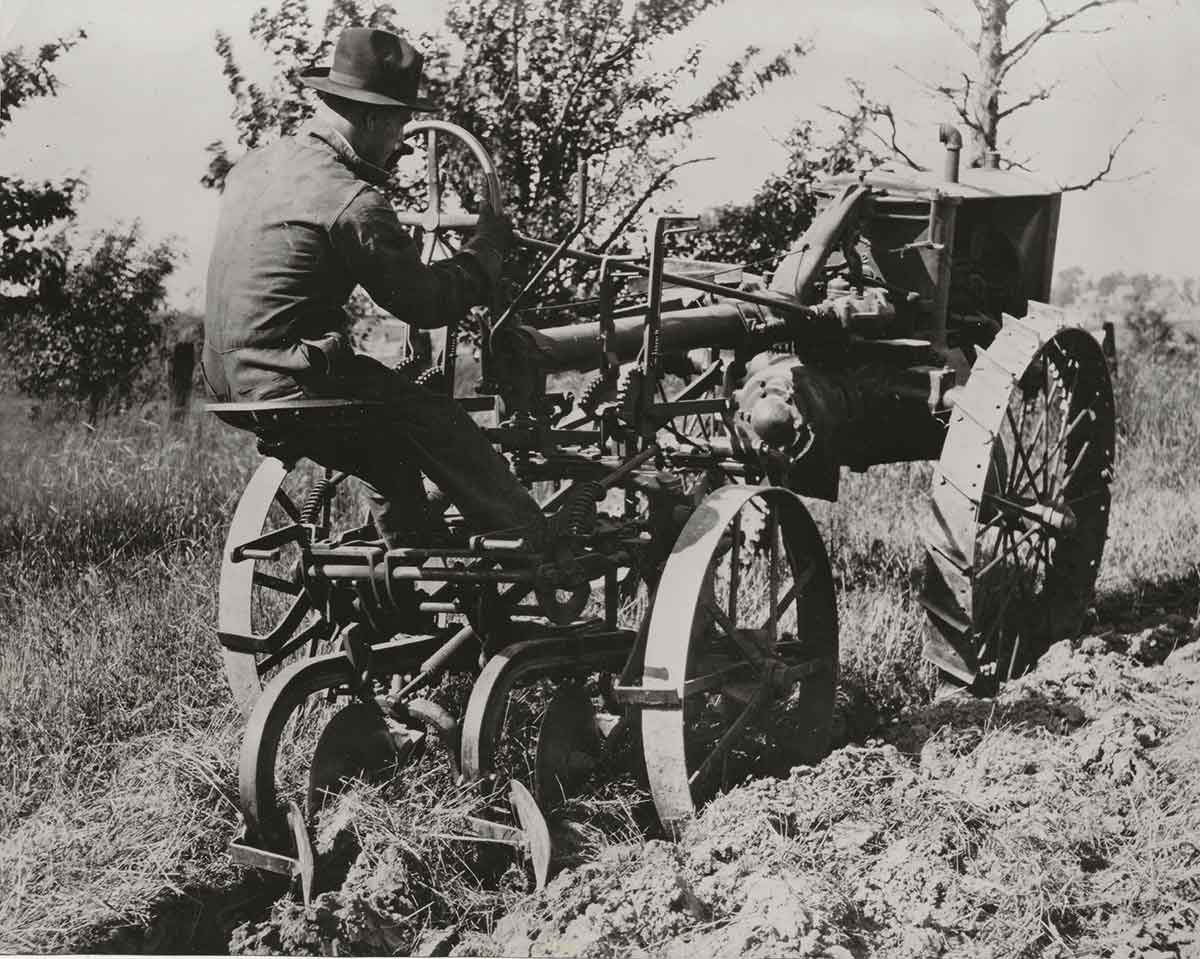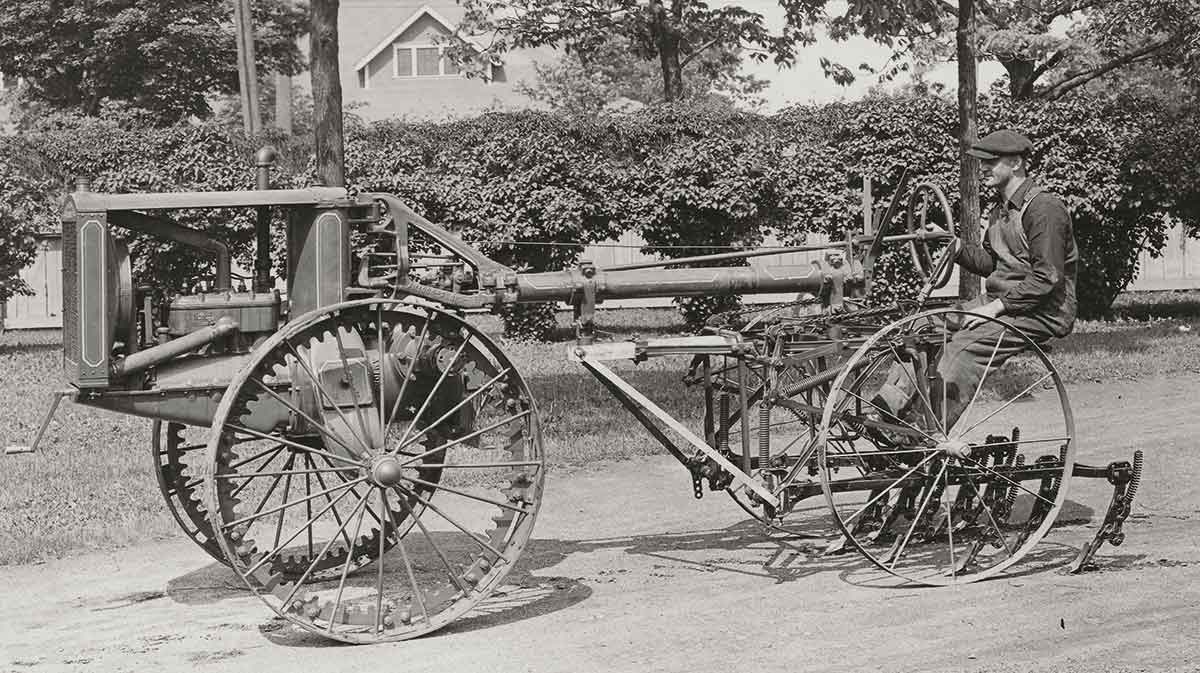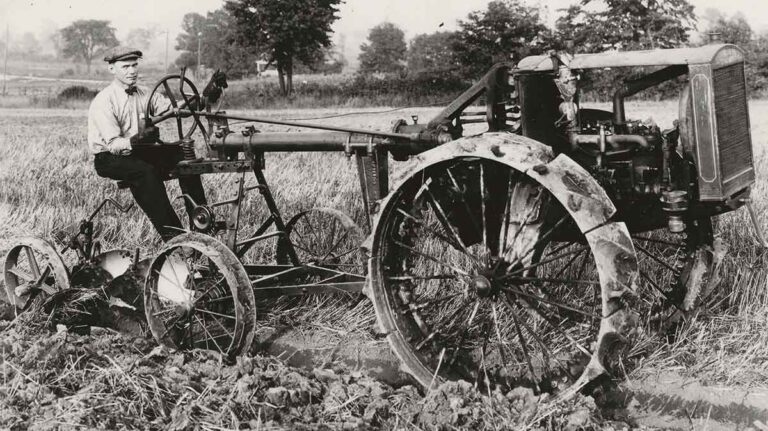The increase in tractor and motor plough popularity during World War 1 occurred mainly in the United States, Canada and the UK where the farming industry was losing large numbers of men and horses needed on the battlefields of Europe.
During the early years of the war, there were more than 25 million horses and mules working on American farms, and replacing some of them with tractor power was an effective way to maintain food production.
See also: Whatever happened to…John Deere Model A?
Most of the motor ploughs were designed with the emphasis on low cost, and in America the Allis-Chalmers 6-12 General Purpose was an example of the type of motor plough used on many small- to medium-acreage farms during and just after the war.
The 6-12 model numbers indicate the power at the drawbar and at the flywheel, and 100 years ago a 12hp tractor was regarded as a step forward for some farmers who were replacing horses for field work and haulage.

Start in flour milling industry
Allis-Chalmers’s history started in the 1840s when a new company was established to make equipment for America’s rapidly expanding flour milling industry, and this became Allis-Chalmers in 1901 following several mergers and takeovers.
Tractors were added to the product range in 1914, perfect timing to benefit from the wartime expansion in tractor sales. The company’s first production tractor was a lightweight three-wheeler powered by a twin-cylinder engine developing 18hp.
The design included exposed ring gears delivering power to the rear wheels, an arrangement that was still popular on tractors in spite of the gear damage caused by stones and dirt.
Another fault with the design was that the transmission provided only one gear forwards and one in reverse, seriously restricting the performance of a low horsepower tractor.

Sales success
In spite of its limitations, the 18hp tractor achieved modest sales success during the war years, encouraging Allis-Chalmers to introduce an additional model announced in 1918.
The new tractor was the 6-12 General Purpose motor plough, which had the misfortune to arrive as the wartime sales surge was ending and just after Henry Ford had announced his new Fordson tractor with a price-cutting policy that would put many rivals out of business.
The American list price for the Model F Fordson started at $750 in 1918, but by 1922 it had been reduced to $395. Meanwhile, the Allis-Chalmers 6-12 motor plough, with less power and some dated design features, was in the 1919 price list at $850.
Allis-Chalmers chose a four-cylinder petrol/paraffin fuelled engine, made by the LeRoi company, and it produced excellent fuel economy when the 6-12 was tested at Nebraska, but in other respects the new motor plough included some features that were becoming outdated.
The fully exposed ring gear final drive to the wheels was retained from an earlier Allis-Chalmers design, while the Fordson and many other tractors were adopting fully enclosed drive systems, and the gearbox on the 6-12 offered a single ratio forward with a 2.5mph maximum instead of the three forward gears with a 6.3mph maximum for Henry Ford’s new tractor.
Maximum power
The maximum power output figures achieved when the 6-12 was tested at Nebraska were 6.29hp at the drawbar and 12.08hp at the flywheel, and claims that the 6-12 could pull a two-furrow plough presumably referred to the easiest soil conditions, with a single furrow probably a more realistic performance assessment.
Not surprisingly, the Fordson was an easy winner in the competition for sales, with annual production figures peaking at more than 100,000 during the mid-1920s.
The Allis-Chalmers 6-12 was announced in 1917 with production starting the following year, but sales figures were disappointing and production ended in 1922 when the total had reached just over 700 during the four-year period.
When the last of the 6-12 motor ploughs had been built, Allis-Chalmers still had a large unsold stock, and these eventually found customers with the price allegedly cut to as little as $293 when the last few were disposed of in 1923.
According to one report, an option considered by the Allis-Chalmers engineers when it became obvious that their 6-12 was attracting few customers, was to build a more powerful motor plough or tractor, perhaps with two of the LeRoi engines or with two 6-12 motor ploughs linked together to form a single unit, but the idea was abandoned at some point and failed to reach production.
Although the lack of sales success for the 6-12 must have been a setback, the company had introduced other tractor models.
Allis-Chalmers also diversified by taking over a number of smaller companies making a range of farm machinery, and expanded its tractor business in 1928 by taking over the Monarch company, a prominent American manufacturer of tracklayers.
Later successes for Allis-Chalmers included pioneering the introduction of special inflatable rubber tyres for tractors during the 1930s, one of the most significant technical advances in tractor history, and at the peak of its success in the 1950s, the Allis-Chalmers tractor business included a UK factory building a range of small tractors including the popular Model B.


